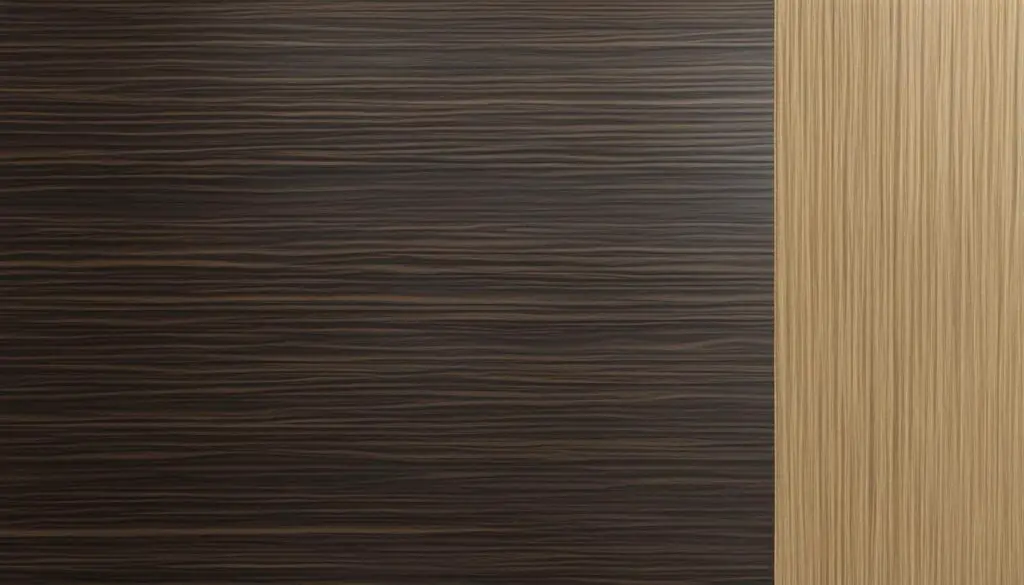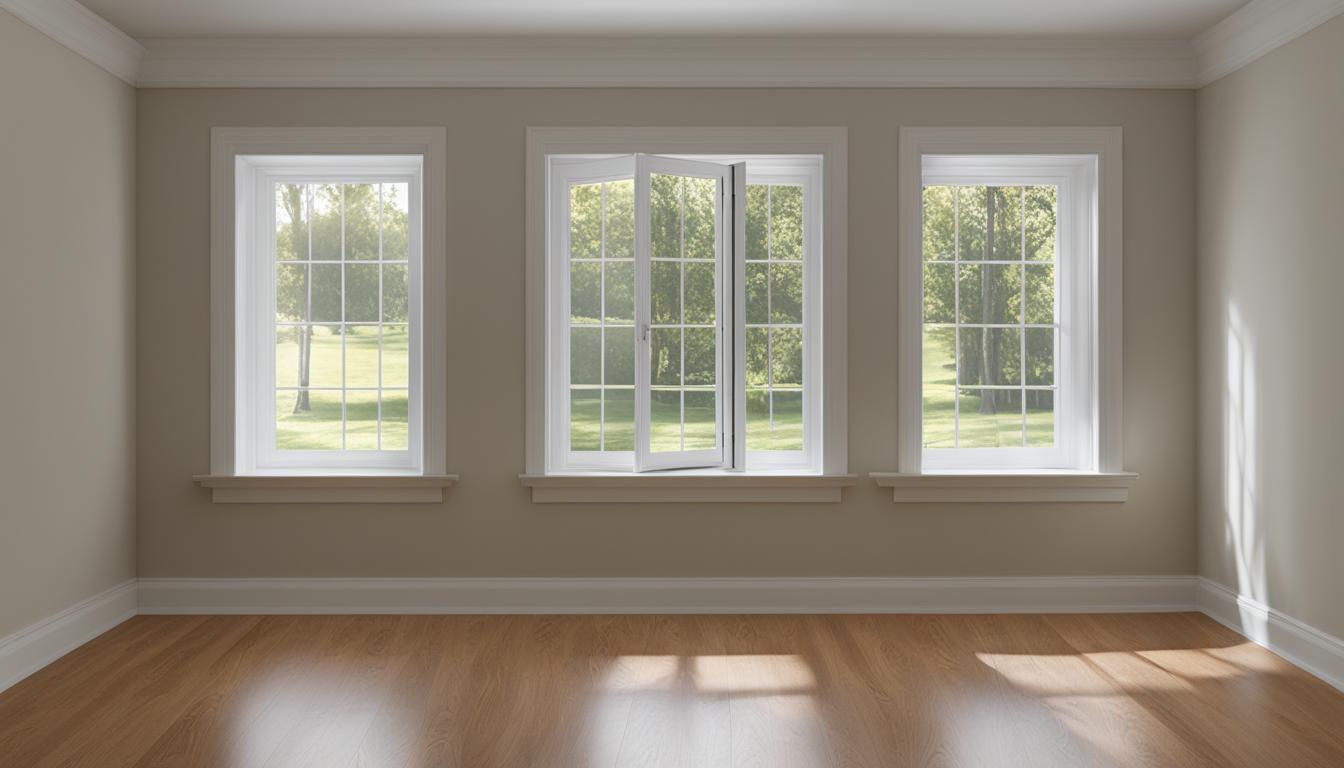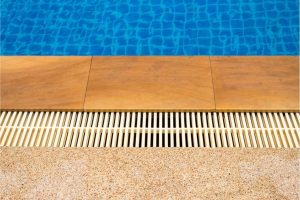When it comes to choosing the right material for your windows, Fibrex and vinyl are two popular options to consider. Fibrex, made by Andersen Windows, is a composite material that combines wood fibers and thermoplastic polymer, offering strength, durability, and eco-friendliness. On the other hand, vinyl is a PVC-based material that is cheaper but less durable. In this article, we will compare the features and benefits of Fibrex and vinyl windows to help you make an informed decision for your home.
Key Takeaways:
- Fibrex, made by Andersen Windows, is a composite material combining wood fibers and thermoplastic polymer.
- Vinyl is a PVC-based material that is cheaper but less durable than Fibrex.
- Fibrex windows offer superior strength, durability, and eco-friendliness compared to vinyl windows.
- Vinyl windows are a more affordable option but may require more maintenance and have a shorter lifespan.
- Considering factors such as longevity, energy efficiency, and environmental impact, Fibrex is the better choice for homeowners looking for high-quality, long-lasting windows.
What Are Fibrex Windows?
Fibrex windows, a popular alternative to vinyl windows, are exclusively made by Andersen Windows. They are composite replacement windows that combine wood fibers and thermoplastic polymer. This unique composition gives Fibrex windows exceptional strength and durability compared to traditional vinyl windows.
Unlike vinyl windows, which are made solely from PVC, Fibrex windows harness the strength of both materials to create a window frame that can withstand the test of time. The wood fibers add structural integrity and stability, while the thermoplastic polymer enhances durability and resistance to warping, chipping, and fading.
Fibrex windows are not only strong and durable, but they also offer eco-friendly benefits. The wood fibers used in Fibrex windows are mostly reclaimed from Andersen’s own manufacturing process, making them a sustainable choice. Additionally, Fibrex windows have a longer lifespan than vinyl windows, reducing the need for replacement and minimizing waste.
With Fibrex windows, homeowners can enjoy the best of both worlds – the strength and durability of composite materials combined with the eco-friendliness of a sustainable choice.
Key Features of Fibrex Windows:
- Composite replacement windows made of wood fibers and thermoplastic polymer
- Superior strength and durability compared to vinyl windows
- Eco-friendly, made from reclaimed materials
- Longer lifespan, reducing the need for replacement
Fibrex Windows vs Vinyl Windows: A Comparison
“Fibrex windows provide the strength and durability of composite materials, while vinyl windows fall short in terms of their structural integrity and longevity. Furthermore, Fibrex windows’ eco-friendly composition adds to their appeal, making them a sustainable choice for homeowners looking for high-quality windows.”
| Fibrex Windows | Vinyl Windows |
|---|---|
| Superior strength and durability | Less durable, prone to warping and fading |
| Eco-friendly, made from reclaimed materials | Not environmentally sustainable |
| Longer lifespan | Shorter lifespan, more susceptible to wear and tear |
When comparing Fibrex windows and vinyl windows, it is clear that Fibrex windows offer unmatched strength, durability, and eco-friendly benefits. Their composite construction allows for a longer lifespan and ensures that they can withstand the elements for years to come. With Fibrex windows, homeowners can enjoy peace of mind knowing that their windows are not only built to last but also have a minimal impact on the environment.
Composition of Fibrex Material
Fibrex material is a unique composite material used in the manufacturing of windows. It is composed of a careful blend of two main components: wood fibers and thermoplastic polymer. This combination results in a material that offers excellent strength, durability, and sustainability.
When it comes to the precise composition, Fibrex material consists of approximately 40% wood fibers and 60% thermoplastic polymer. The wood fibers used in Fibrex are predominantly reclaimed from Andersen’s own manufacturing process, making it an environmentally conscious choice.
The addition of wood fibers provides several key benefits to Fibrex. Firstly, it enhances the material’s strength, allowing it to withstand the rigors of everyday use and resist warping or cracking. Additionally, the presence of wood fibers gives Fibrex a unique aesthetic appeal, reminiscent of natural wood finishes.
The thermoplastic polymer component of Fibrex contributes to its durability and longevity. This polymer provides added protection against moisture, impact, and UV radiation, making Fibrex windows highly resistant to rotting, peeling, or fading over time.
It’s worth noting that Fibrex material is available in both a wood grain finish and a paint finish. This versatility allows homeowners to customize the look of their windows, ensuring they complement the style and architecture of their homes.
| Component | Composition |
|---|---|
| Wood fibers | Approximately 40% |
| Thermoplastic polymer | Approximately 60% |
By carefully combining wood fibers and thermoplastic polymer, Fibrex material offers the perfect balance of strength, durability, and aesthetic appeal. It is a sustainable and innovative choice for homeowners seeking high-quality windows that will stand the test of time.

Advantages of Fibrex Windows
When it comes to choosing the right windows for your home, Fibrex windows offer a range of advantages over vinyl windows. Let’s explore the key benefits that make Fibrex an excellent choice:
Sustainable
Fibrex windows are crafted from reclaimed materials, making them a sustainable option for environmentally conscious homeowners. By choosing Fibrex, you not only enhance the beauty of your home but also contribute to reducing waste and promoting a greener future.
Energy-efficient
One of the notable advantages of Fibrex windows is their exceptional energy efficiency. These windows block thermal transfer effectively, providing better insulation than vinyl windows. The energy-efficient properties of Fibrex windows can help you reduce your energy consumption and save on heating and cooling costs.
Durable
Fibrex windows are renowned for their durability. Built to withstand the test of time, they are resistant to chipping, warping, and rotting, ensuring that your windows maintain their high-quality appearance for years to come. With Fibrex windows, you can enjoy the peace of mind that comes with long-lasting durability.
Low Maintenance
When it comes to maintenance, Fibrex windows are a homeowner’s dream. Unlike other materials, like wood, Fibrex windows do not require regular painting or sealing. They are incredibly low maintenance, simply needing occasional cleaning to maintain their pristine condition. Say goodbye to time-consuming upkeep and enjoy more free time for yourself.

Fibrex vs Vinyl: A Comparison
When deciding between Fibrex and vinyl windows, it is important to understand the key differences in terms of strength, durability, decay resistance, thermal expansion, insulating properties, compressive strength, and green benefits. Here is a detailed comparison:
Strength and Durability
Fibrex windows are twice as strong as vinyl windows, making them highly durable and able to withstand various weather conditions. On the other hand, vinyl windows are prone to warping, chipping, and cracking over time, which can compromise their structural integrity.
Decay Resistance
Fibrex windows are resistant to decay, ensuring that they will maintain their strength and appearance for years to come. In contrast, vinyl windows can become dirty, stained, and even develop mold, leading to a decline in their aesthetics and functionality.
Thermal Expansion
Fibrex has a lower thermal expansion rate compared to vinyl. This means that Fibrex windows expand and contract less in response to temperature changes, which reduces the risk of warping and distortion. Vinyl windows, on the other hand, are more prone to expanding and contracting, potentially compromising their performance and longevity.
Insulating Properties
Fibrex windows offer superior insulating properties compared to vinyl windows. With their advanced composition, Fibrex windows provide better resistance to heat transfer, keeping your home cool in the summer and warm in the winter. Vinyl windows, on the other hand, may not provide the same level of energy efficiency, resulting in higher energy bills and reduced comfort.
Compressive Strength
When it comes to compressive strength, Fibrex outperforms vinyl. Fibrex can withstand greater pressure and load, ensuring long-term stability and durability. Vinyl windows, on the other hand, may be more susceptible to structural failures under heavy loads or impact.
Green Benefits
In addition to its superior performance, Fibrex offers green benefits that make it an environmentally-friendly choice. Fibrex windows are partially made from reclaimed materials, reducing the demand for new resources and minimizing waste. On the other hand, vinyl windows are derived from PVC, a material associated with environmental concerns. By choosing Fibrex, you can contribute to a more sustainable future.
Overall, when comparing Fibrex and vinyl windows, it is clear that Fibrex offers numerous advantages in terms of strength, durability, decay resistance, thermal expansion, insulating properties, compressive strength, and green benefits. Investing in Fibrex windows ensures a long-lasting, energy-efficient, and environmentally-friendly solution for your home.
Pros and Cons of Fibrex and Vinyl Windows
Fibrex windows and vinyl windows both have their own unique advantages and disadvantages. When deciding between the two, it’s important to consider factors such as durability, energy efficiency, and environmental impact. Let’s take a closer look at the pros and cons of each.
Fibrex Windows
Fibrex windows offer several benefits that make them a popular choice among homeowners. Here are the pros:
- Durability: Fibrex windows are more durable than vinyl windows, thanks to their composite material of wood fibers and thermoplastic polymer. They have a longer lifespan and are resistant to chipping, warping, and rotting.
- Energy Efficiency: Fibrex windows provide better insulation than vinyl, helping to reduce energy loss and improve energy efficiency in your home.
- Environmental Impact: Fibrex windows are made from reclaimed materials, making them a more sustainable option. By choosing Fibrex windows, you’re helping to reduce waste and minimize environmental impact.
Despite these advantages, Fibrex windows do have some drawbacks:
- Higher Cost: Fibrex windows can be more expensive than vinyl windows, which may put them out of budget for some homeowners.
- Longer Installation Times: The installation of Fibrex windows may take longer compared to vinyl windows due to their composition and specific installation requirements.
Vinyl Windows
Vinyl windows are another popular choice for homeowners. Here are the pros of vinyl windows:
- Lower Cost: Vinyl windows are generally more affordable than Fibrex windows, making them a budget-friendly option.
- Easier Installation: Vinyl windows are easier and quicker to install compared to Fibrex windows, which can save on installation time and costs.
However, vinyl windows also have some disadvantages:
- Less Durability: Vinyl windows are not as durable as Fibrex windows and may have a shorter lifespan. They can become dirty, stained, and collect mold over time.
- Environmental Impact: Vinyl windows are made from PVC, a non-recyclable material that has a greater environmental impact compared to Fibrex. Disposing of vinyl windows can contribute to landfill waste.
Conclusion
When it comes to choosing the best window material, Fibrex emerges as the clear winner in the fibrex vs vinyl comparison. With its superior strength, durability, and energy efficiency, Fibrex outperforms vinyl in every aspect.
While the initial cost of Fibrex windows may be higher, their longer lifespan and reduced maintenance requirements make them a cost-effective investment in the long run. Homeowners can trust that Fibrex windows will withstand the test of time, providing them with high-quality and long-lasting windows for their homes.
In addition to its impressive performance, Fibrex is an eco-friendly choice. Made from reclaimed materials, it offers sustainability benefits that vinyl cannot match. By choosing Fibrex, homeowners not only enhance the beauty and functionality of their homes but also contribute to a greener future.
In conclusion, Fibrex windows are the best choice for homeowners seeking top-quality, durable, energy-efficient, and sustainable window materials. With Fibrex, you can enjoy the benefits of superior performance, reduced maintenance, and a greener home. Make the smart choice and invest in Fibrex windows for a lifetime of comfort and peace of mind.
FAQ
What are the advantages of Fibrex windows over vinyl windows?
Fibrex windows are more durable, energy-efficient, and sustainable compared to vinyl windows. They have a longer lifespan, require less maintenance, and offer better insulation and resistance to decay.
How is Fibrex material composed?
Fibrex material is composed of 40% wood fibers and 60% thermoplastic polymer. The wood fibers are mostly reclaimed from Andersen’s own manufacturing process, making Fibrex a sustainable choice.
Are Fibrex windows more expensive than vinyl windows?
Fibrex windows may have a higher initial cost compared to vinyl windows. However, their longer lifespan and lower maintenance requirements make them a cost-effective investment in the long run.
What is the difference between Fibrex and vinyl in terms of strength and durability?
Fibrex windows are twice as strong as vinyl windows and are resistant to chipping, warping, and rotting. Vinyl windows, on the other hand, can become dirty, stained, and collect mold over time.
How do Fibrex windows compare to vinyl windows in terms of energy efficiency?
Fibrex windows provide better insulation and block thermal transfer at a higher rate than vinyl windows, making them more energy-efficient.
Are Fibrex windows environmentally friendly?
Yes, Fibrex windows are environmentally friendly. They are made from reclaimed materials and have a longer lifespan than vinyl windows, reducing waste and carbon footprint.



